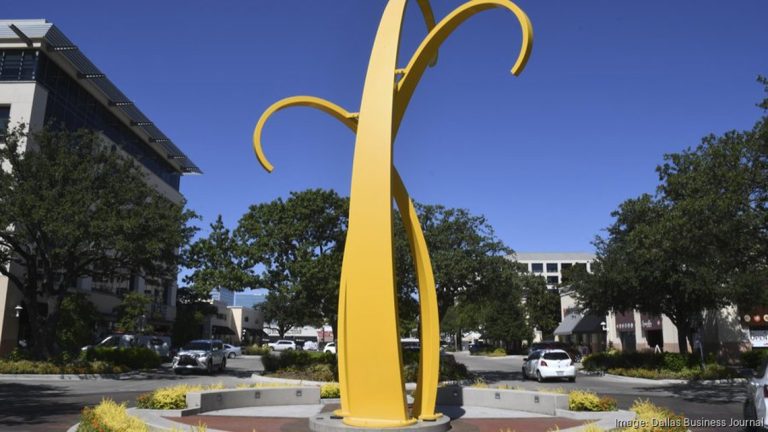Dallas — read This story and more North Texas business news From our partners at the Dallas Business Journal.
Twenty Dallas-Fort Worth area ZIP codes made the list in a new ranking of the 1,000 wealthiest cities in the nation.
Zip code 75225, which covers parts of University Park and stretches into North Dallas, led DFW and ranked first in the entire state. Bounded roughly by the Dallas North Tollway to the west, Lovers Lane to the south, US 75 to the east and Walnut Lane Hill to the north, the area came in at No. 82 out of the 1,000 U.S. zip codes and ranked in the top 10% of the wealthiest areas in the country.
Zip code 75205, which covers most of Highland Park just south, is ranked No. 2 in North Texas and No. 220 nationally. North Dallas’ zip code 75230 rounded out the top three locally and No. 261 overall.
The Wealthy 1000 differs from Dallas Business Journal’s previous ranking of ZIP codes, which are based on median household income, and in the latest edition of that list, Southlake’s ZIP code, 76092, is ranked No. 1 in DFW.
The Business Journal calculated the Richest 1000 using a weighted formula that included income levels, home prices, poverty rates and population density to identify areas with the highest concentrations of wealth. Data was sourced from the U.S. Census Bureau, the 2022 American Community Survey and Zillow Group.
The ranking also includes a minimum threshold of $70,000 per capita income, which excludes ZIP codes with high population density but low income levels and relatively high poverty rates.
The 20 DFW zip codes in the Wealthy 1000 are:
• No. 82: 75225 (University Park, North Dallas)
• No. 220: 75205 (Highland Park, University Park)
• No. 261: 75230 (North Dallas)
• No. 312: 75209 (Greenway Parks, Bluffview).
• No. 325: 75219 (Turtle Creek, Perry Heights)
• No. 387: 75201 (Harwood neighborhood, downtown Dallas)
• No. 397: 75214 (Lakewood, Lakewood Hills, Northeast Dallas, Junius Heights)
• No. 443: 75204 (Uptown, Old East Dallas, Belmont Park, State Thomas)
• No. 462: 75093 (Willowbend, Lakeside on Preston).
• No. 480: 76034 (Colleyville)
• No. 504: 75206 (Greenland Hills)
• No. 544: 75218 (Old Lake Highlands)
• No. 555: 76248 (Keller)
• No. 580 76092 (South Lake)
• No. 606: 75019 (Coppell)
• No. 613: 75244 (Far North Dallas)
• No. 653: 75202 (Downtown Dallas)
• No. 730: 75022 (Flower Mound)
• No. 748: 75039 (Irving, Las Colinas)
• No. 773: 76005 (Arlington, Viridian)
Top of the list
The top 25 zip codes on the Wealthy 1000 list were concentrated in the nation’s most populous cities, including New York, San Francisco, Chicago, Miami and Boston.
Not surprisingly, nine of the top 10 ZIP codes were in the New York City metropolitan area, the top region for those earning more than $1 million.
California had the most zip codes on the list (190), followed by New Jersey (111), New York (95), Massachusetts (79) and Florida (57).
Of California’s zip codes, 73 are in the San Francisco area. Los Angeles accounts for 20 zip codes, while San Jose (12) and San Diego (10) also show high wealth density.
Because of the focus on wealth concentration, some states are not included in the Richest 1000, including Alaska, Montana, North Dakota, South Dakota, Wyoming and Vermont.
Some of these states have higher-than-average gross domestic product per capita, but also have a high concentration of vacation homes and ranches, which are not considered formal households in this analysis.
The poverty rate also relaxed its weighting formula, resulting in the exclusion of all ZIP codes in Mississippi, Louisiana and West Virginia.
Conversely, education level as measured by the census was taken into account in the Business Journal’s proprietary formula.
In the top 10 ZIP codes, an average of 78% of residents have a bachelor’s degree or higher, which coincides with a recent Georgetown University report that found Americans with a bachelor’s degree can expect to earn, on average, $1 million more over their lifetime than those without one.
Migration of the wealthy benefits less populated states
That said, American money is on the move.
Louisiana, Montana and Vermont all saw the largest increases in million-dollar earners from 2020 to 2021, according to IRS data.
Additionally, the Sunbelt region has seen a surge in migration over the past decade, a trend that has accelerated during the pandemic.
“Many high-income remote workers have relocated to areas with lower costs,” said Scott Fulford, a senior economist at the Consumer Financial Protection Bureau and author of “The Pandemic Paradox: How the COVID Crisis Helped Americans Become Financially Stable.” “Popular destinations include Montana and Idaho, as well as states close to major metropolitan areas that allow occasional travel, like Vermont and West Virginia.”

